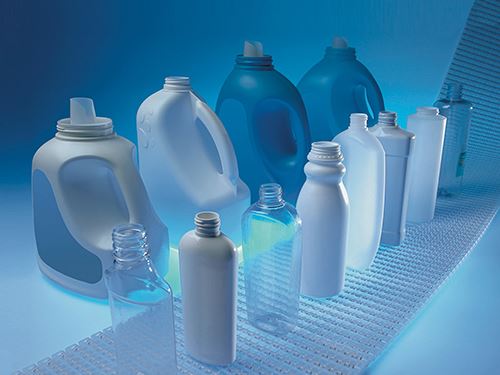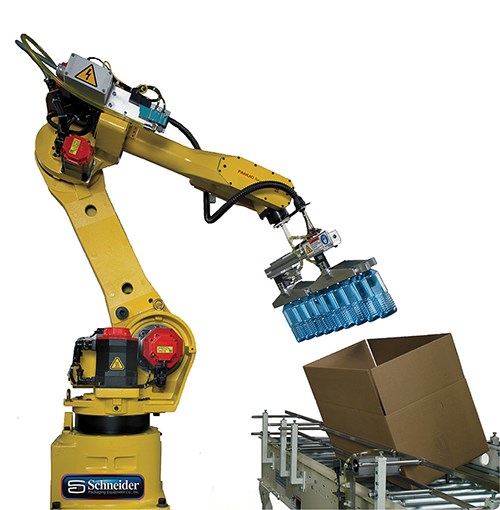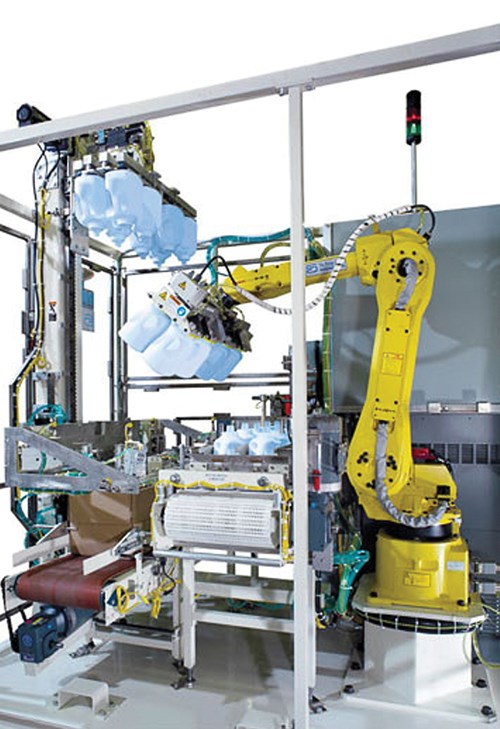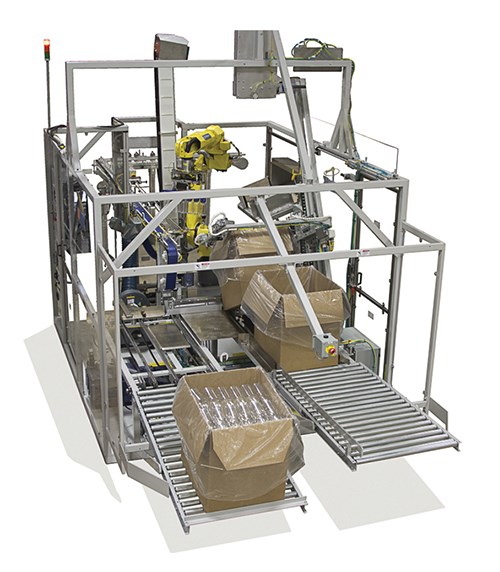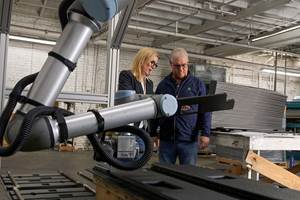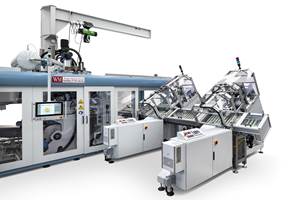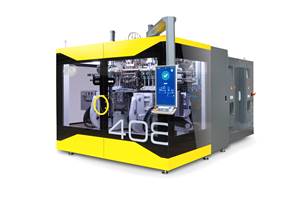When Robots Make Sense For Part Packaging
Here are nine issues to take into account before automating your end-of-the-line part-packaging process.
Robots can pack less expensively and more efficiently than people and can work around work-force shortages, letting people work where they are the most needed. Robotic machines run an average of 80,000 hr before requiring maintenance. Savvy processors that understand the process benefits also value the reduction in demands on their personnel and grasp the “end-of-line” solutions that will reap benefits for years to come.
Nonetheless, when considering robotic automation for end-of-line packaging of plastic parts, there are several factors to be evaluated to ensure that the switch to automation will provide the competitive edge needed to cut costs and boost profit.
1. Product Quantities: It’s important to first assess whether automating an end-of-line packaging system will improve pack efficiency and reduce costs. Begin by analyzing runtimes and product quantities. People are efficient at packaging small, short, one-of-a-kind runs, so robotics may not be the best choice for a product that will only run once or if different products run every day. Repeatable runs are a key factor in robotic efficiency.
2. Clearance: While conventional designs for a packaging application are inflexible, a robotic design for a line process can be adapted for multiple products or different sizes. Packaging can now be integrated with technology from any start point to any final destination, regardless of physical layouts and space limitations … with one caveat: The space must include sufficient clearance for robotic components. Consulting with a packaging system provider to think through the design phase comprehensively can save both time and money, especially on big projects. Conversely, space that was previously unused, such as a high ceiling, may be used to stack higher pallets with robotic equipment.
3. FDA Product Handling Requirements: Sometimes FDA requirements for handling of food containers dictate which areas of the containers can come in contact with a tool. This may impact end-of-arm tool design. Robotic end-of-arm tooling, including new types of 3D printed EOAT, can be designed to achieve very specific movements or placement and can easily be replaced as the products or procedures for packaging change. These tools are capable of complex picks and motions that would not be possible or safe for a person, even though packing orientations are limited to horizontal or vertical motions, as diagonal motions are not suited to robotic movement.
4. Product ‘Behavior’: Differences in the physical characteristics of plastic containers, such as round, square, or tacky, can affect the performance of a packaging system. Packaging engineers with a deep knowledge of plastic product “behavior” can offer the best solutions and supply the best possible equipment. Take the case of static “cling” in bottles—PET in particular. Bottles can stick, causing them to jam or not travel down the line in a predictable manner. This may require use of an antistatic spray system to blow charged air onto the bottles, or grounding strips or plates on the machine to help dissipate static buildup, and/or changes in conveyor belt material to lessen the friction.
5. New Packaging Possibilities: The capabilities of robotic movement open up new packaging possibilities. An updated packaging system should simplify and consolidate your bulk material purchasing. By taking a step back to look at trends and expenditures during the planning phase, your team can truly understand where the most material dollars are spent and dedicate the appropriate resources in order to deliver substantial cost savings.
An example of one such possibility for plastics is switching from corrugated cardboard containers that house a small amount of product to plastic Gaylord pallet containers for storage or transport. Pallet containers with 1200-lb capacity are made from rotationally molded LDPE and are waterproof, rustproof, and UV-stabilized for strength and durability. The base allows four-way forklift access. Measuring 50 in. wide x 50 in. long overall, a Gaylord container without casters allows stacking up to three high fully loaded with lid. One Gaylord container is the approximate equivalent of eight cardboard cartons, reducing the corrugated costs and the carbon footprint.
6. Quality Control: Robots pack efficiently and also contribute to a clean environment, lowering the risk of contamination, but they still require a quality-control process. Quality control on a manual packaging line is often performed by an employee on the line. An automated line requires implementing something new. It can be as simple as a leak checker or as high-tech as a vision system or other sensor.
Vision-guided robotics can now verify product position, check the placement of a label, and inspect the printing on the label for correct content simultaneously. By automating these tasks, workers are freed from repetitive-motion activities to work on other important jobs, and it greatly reduces (in many cases to zero) the number of rejected products passing through an inspection line.
7. Build Green: Consider the lifetime costs of the equipment, which will always point to sustainable features for savings. Be sure your new packaging equipment includes energy-saving provisions. Even small things like auto shutoff and standby modes can add up to substantial energy savings over time.
8. Solve Ergonomically Flawed Processes: The main reasons robotics succeed where conventional tactics fail is that robotic packaging is a more flexible and repeatable process, which brings increased productivity and eliminates ergonomic problems. Repetitive motions such as lifting, bending, labeling, inspecting, and orienting are the most ergonomically challenging for workers.
Automated guided carts are ideal for moving palletized products from floor storage or palletizers, stretch wrappers, and conveyors to anywhere within a plant or warehouse as well as delivering empty pallets, slip sheets, etc. to keep a robotic palletizer cell in continuous operation. Guided vehicles use a magnetic tape to automatically arrive at the proper station and are timed to perfectly compliment the speed of the packaging line.
9. Choosing a Provider: Once you have determined whether your line meets the criteria for developing an automated line, you will be able to reap the benefits of repeatability, consistency, and a cleaner environment. You will be able to reduce training and injury costs and run shifts consistently even in intense heat or cold. The ability to specify how a product should be handled from years of experience, along with the ability to streamline the process for the client, is what a good packaging system provider brings to the table.
Related Content
Cobot Creates 'Cell Manufacturing Dream' for Thermoformer
Kal Plastics deploys Universal Robot trimming cobot for a fraction of the cost and lead time of a CNC machine, cuts trimming time nearly in half and reduces late shipments to under 1% — all while improving employee safety and growth opportunities.
Read MoreAutomation in Thermoforming on the Rise
Equipment suppliers’ latest innovations exemplify this trend driven by factors such as labor shortages, higher-speed thermoformers and tighter quality control.
Read MoreHow Was K 2022 for Blow Molding?
Over a dozen companies emphasized sustainability with use of foam and recycle, lightweighting and energy savings, along with new capabilities in controls, automation and quick changeovers.
Read MoreScaling New Heights With Vertical Integration
Eden Manufacturing was founded on a vision of vertical integration, adding advanced injection molding capabilities to a base of precision moldmaking and more recently bringing Swiss-type machining capabilities in-house.
Read MoreRead Next
Beyond Prototypes: 8 Ways the Plastics Industry Is Using 3D Printing
Plastics processors are finding applications for 3D printing around the plant and across the supply chain. Here are 8 examples to look for at NPE2024.
Read MoreFor PLASTICS' CEO Seaholm, NPE to Shine Light on Sustainability Successes
With advocacy, communication and sustainability as three main pillars, Seaholm leads a trade association to NPE that ‘is more active today than we have ever been.’
Read More
